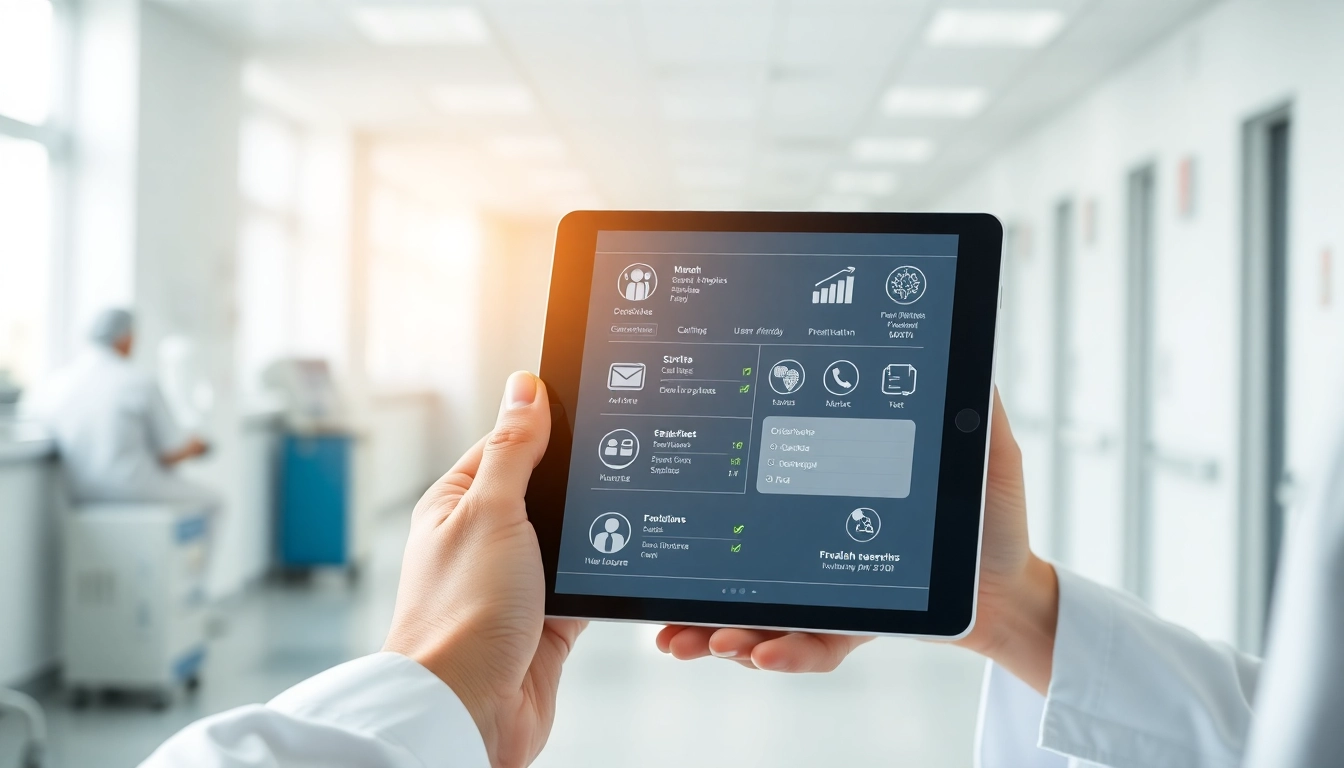Understanding ePrescription App Development
In today’s digital healthcare landscape, the evolution of technology is transforming the way prescriptions are managed, leading to more efficient patient outcomes. This transformation stems from understanding the intricacies of eprescription app development. ePrescription, or electronic prescription, refers to the digital handling of medication prescriptions, allowing healthcare providers to transmit prescriptions securely to pharmacies, thus streamlining the traditional prescription process.
What is ePrescription and its Importance?
ePrescription technology replaces handwritten prescriptions with electronic messages sent directly to a pharmacy. This not only minimizes the risk of error due to poor handwriting but also enables providers to check for potential drug interactions, allergies, and other important patient health factors. The importance of ePrescriptions cannot be overstated:
- Efficiency: Reduces time spent on managing prescriptions.
- Accuracy: Enhances patient safety by minimizing medication errors.
- Cost-Effectiveness: Reduces the overall healthcare costs involved in prescription management.
- Patient Convenience: Allows for easier access to medications through connected pharmacies.
- Data Integration: Enables comprehensive patient records that are easily accessible to healthcare providers.
Core Features of ePrescription Apps
When developing an ePrescription app, certain core features should be incorporated to enhance its functionality and user experience:
- User Authentication: Secure login options for healthcare providers to safeguard patient data.
- Prescription Management: A straightforward interface for creating, managing, and adjusting prescriptions.
- Medication Database: An extensive database that includes all medications, dosages, interactions, and side effects.
- Pharmacy Integration: Seamless connectivity with pharmacies to send prescriptions directly.
- Patient Profile Management: Features that track patient history, allergies, and medication records.
- Notification System: Alerts for patients about refill dates and medication adherence.
Target Audience and User Needs
Identifying the target audience is paramount in ePrescription app development. The main users include:
- Healthcare Providers: Doctors, nurses, and clinicians require an efficient way to manage patient prescriptions securely.
- Patients: Individuals seeking a simplified process for accessing their medications while ensuring safety.
- Pharmacists: Pharmacy staff who need a reliable system for receiving and managing prescriptions.
Understanding the unique needs of each user group allows developers to create tailored solutions that enhance usability and engagement throughout the prescription journey.
Designing an Intuitive User Interface
User interface (UI) design is critical in ensuring an engaging and effective ePrescription app. A well-designed UI not only attracts users but also enhances their ability to navigate through the app seamlessly.
Best Practices for User Experience in ePrescription App Development
To create a positive user experience (UX), developers should adhere to several best practices:
- Simplicity: Keep the design clean and straightforward. Avoid cluttering the screen with unnecessary information.
- Consistent Navigation: Ensure easy access to all features through a consistent navigation structure.
- Visual Hierarchy: Employ size, color, and spacing to guide users to the most important features and information.
- Responsive Design: Ensure the app performs efficiently across various devices and screen sizes.
- User Guidance: Implement tooltips, tutorials, and onboarding processes to assist users in navigating the app.
Accessibility and Inclusivity in Design
In today’s diverse user environment, it’s critical to incorporate accessibility and inclusivity into ePrescription app design. Here’s how:
- Color Contrast: Use contrasting colors to help visually impaired users navigate the app effectively.
- Text-to-Speech Features: Implement functionalities for users who require audio assistance.
- Adaptable Text Sizes: Allow users to adjust text sizes for easier readability.
- Keyboard Navigation: Ensure that all app functionalities can be accessed through keyboard shortcuts for those who cannot use a mouse.
Designing with inclusivity in mind not only broadens the app’s user base but also enhances the overall user experience for all patients.
Prototype and Feedback Loops
The prototyping stage is where ideas become tangible, offering a visual representation of the ePrescription app. Gathering user feedback during this stage is essential:
- User Testing: Conduct user testing sessions to collect data on user interactions and potential usability issues.
- Iterative Development: Utilize an iterative approach that allows for frequent revisions based on user feedback and testing results.
- Feedback Channels: Provide users with easy channels for feedback and suggestions throughout the prototype and development stages.
Integrating Compliance and Security Standards
Adhering to compliance and security standards is mandatory in ePrescription app development. Ensuring that the application meets legal requirements is not only essential for protecting sensitive data but also for building user trust.
Regulations Governing ePrescription Technologies
Different countries have established regulations that govern ePrescription technologies. In the United States, for instance, the Health Insurance Portability and Accountability Act (HIPAA) poses stringent rules about patient data security. These regulations encompass:
- Data Encryption: All sensitive data must be encrypted both in transit and at rest.
- Audit Trails: Systems should maintain clear logs of data access and modifications.
- Authorization Mechanisms: Implement strict measures for identifying and authorizing users who access patient information.
Data Security Measures for Healthcare Apps
Healthcare applications must adopt robust security measures to protect patient information. Here are several best practices:
- Two-Factor Authentication: Enforce two-factor authentication methods to enhance security during user logins.
- Regular Security Audits: Conduct regular security assessments to identify and rectify vulnerabilities.
- Secure APIs: Ensure that all third-party API interactions are secure to prevent data breaches.
Maintaining Patient Privacy
Ensuring patient privacy is paramount. This involves:
- Data Minimization: Collect only the necessary data required for providing healthcare services.
- Clear Privacy Policies: Clearly communicate privacy policies to users to build trust.
- User Control: Provide users control over their data, including options to delete or export their data.
Technology Stack for Developing ePrescription Apps
The technology stack is fundamental in shaping the development framework of ePrescription apps. Choosing the right technologies impacts performance, scalability, and user experience.
Choosing the Right Development Frameworks
Several frameworks are suited for developing effective ePrescription apps:
- React Native: A popular choice for building cross-platform applications quickly without compromising performance.
- Spring Boot: Ideal for creating robust back-end services for ePrescription apps.
- Flutter: Another beneficial framework for developing visually appealing apps across platforms.
Careful consideration of the chosen framework can ensure smooth integrations and functionality as your app scales.
APIs and Third-Party Integrations
Integrating third-party APIs is crucial for enhancing ePrescription apps. Key integrations include:
- Medication Databases: Access to comprehensive drug databases to ensure accurate prescribing.
- Payment Gateways: Enables hassle-free transactions and payment processing.
- Telehealth Services: Integrating telehealth services improves patient engagement and accessibility.
Scalability Considerations in App Development
As user demand for ePrescription apps grows, scalability becomes a vital concern. The following practices can help ensure your app scales efficiently:
- Microservices Architecture: Building the application in microservices allows for independent upgrades and scalability.
- Cloud Solutions: Leveraging cloud platforms offers flexibility and resource scalability as user numbers increase.
- Load Balancing: Implementing load balancing ensures application stability during high traffic loads.
Measuring Success and Optimizing ePrescription Apps
After launching an ePrescription app, it is crucial to measure success and continuously optimize the platform to ensure users remain engaged and satisfied.
Key Performance Indicators for ePrescription Apps
The effectiveness of an ePrescription app can be gauged through various Key Performance Indicators (KPIs), including:
- User Adoption Rate: The number of new users should grow steadily post-launch.
- Prescription Fulfillment Rate: Monitor the percentage of prescriptions correctly filled and collected from pharmacies.
- User Retention Rate: Assess how many users return to the app after the initial visit.
- Engagement Metrics: Analyze time spent in the app and feature utilization rates.
User Engagement Strategies Post Launch
To keep users engaged with the ePrescription app, consider implementing these strategies:
- Regular Updates: Continually update the app with new features and improvements based on user feedback.
- Gamification: Introduce elements of gamification to motivate patients in managing their health.
- Content Marketing: Provide educational resources related to medication adherence and health management.
Iterating Based on User Feedback
Continuous improvement is vital for the longevity of an ePrescription app. Key steps include:
- User Surveys: Regularly survey users to understand their needs and areas for improvement.
- Feature Requests: Actively implement user-requested features to align the app closer to user expectations.
- Anomaly Monitoring: Set up monitoring systems to detect and rectify anomalies in app functionality.
Through a commitment to user-centric design, maintaining compliance, and focusing on technological advancement, ePrescription app development can revolutionize how prescriptions are managed within the healthcare sector. By understanding the user needs, adhering to regulations, and leveraging the right technology stack, developers can contribute significantly to improving patient care and efficiency in the healthcare ecosystem.



